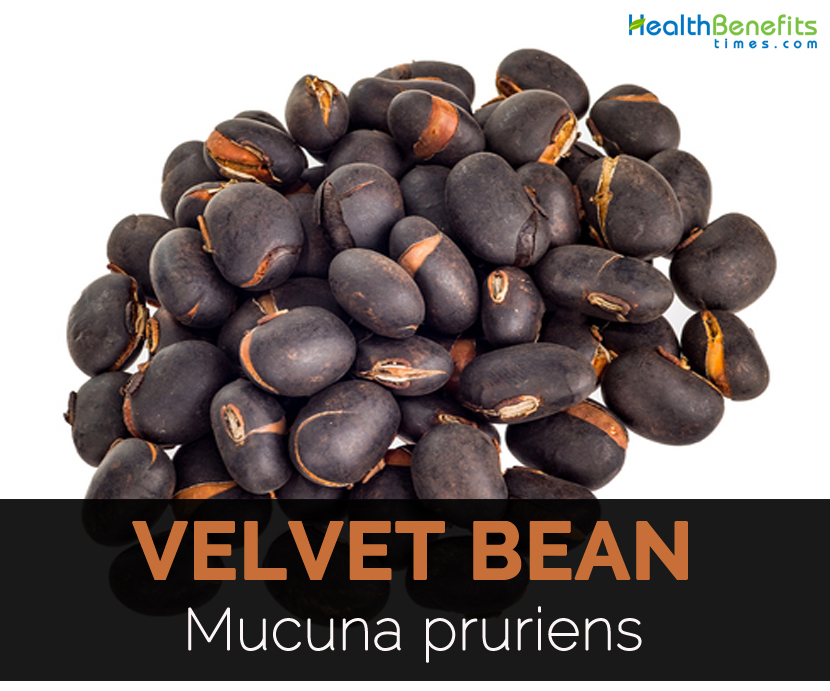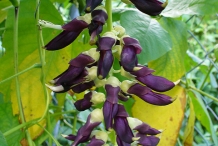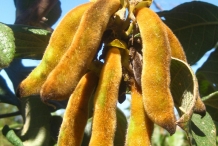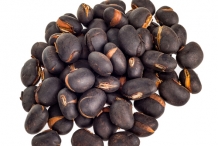| Velvet beans Quick Facts |
| Name: |
Velvet beans |
| Scientific Name: |
Mucuna pruriens |
| Origin |
Asia and grows in India, Pakistan, Bangladesh, among many other countries |
| Shapes |
Pod, oblong or ellipsoidal, 10 cm long, not winged or plaited |
| Health benefits |
Enhances sperm count, Aphrodisiac properties, Treat diabetes, Parkinson's disease treatment, Benefits for mind |
Velvet bean, also referred to as mucuna prurien, is really a exotic legume having lengthy clusters of purplish flowers and densely hair pods. It is really an annual climbing shrub having long vines with a length of over 15 meters. The beans are grown in southern United States, Africa, India and also the West Indies for green manure and grazing. They’re also utilized as ornamentals. Velvet beans are recognized by the multitude of common names like atmagupta, kiwanch, alkushi, cowitch, cowhage, picapica, kapicachu, and yerepe. They’ve been utilized in Indian Ayurvedic medicine since a long time to deal with worms, dysentery, diarrhea, snake bites, sexual debility, cough, tuberculosis, impotence, rheumatic disorders, muscular pain, sterility, gout, menstrual disorders, diabetes, and cancer.
Health benefits of Velvet Bean
Velvet bean, also known as cowhage or even kapikachu, is a very common exotic legume that will reach up to 15 meters in height. It really is mostly utilized as green manure and forage also it nourishes soil due to its nitrogen fixation effect. However, researchers have found that usage of velvet beans offer particular advantages. The following are some of the health benefits of velvet bean.
1. Enhances sperm count
Velvet beans consist of a number of alkaloids which are recognized for revitalizing testosterone secretion to make sure better accessibility of gonads. This process leads to a boost in testes size and sperm count too. The entire process of sperm creation, spermatogenesis, is generally administered by testosterone. Improving the testosterone levels as a result results in higher manufacture of sperms.
2. Aphrodisiac properties
Velvet beans have been proven to boost sexual performance, behavior as well as libido. Frequent use of these types of velvet beans really leads to heightened arousals in addition to enhanced sexual activity. Furthermore, it also delays ejaculation by toning down the hypersensitivity of the person’s genitals. This will make it helpful for individuals with the problem of premature ejaculation.
3. Treats diabetes
Since the usage of velvet beans significantly decreases levels of blood sugar, it really is extremely beneficial in diabetes treatment. The high content of levodopa in these beans helps people with diabetes to help keep healthy levels of blood sugar as well as cholesterol. Velvet beans might also help individuals to lose weight, further benefiting diabetes treatment.
4. Parkinson’s disease treatment
Velvet beans might be utilized in Parkinson’s disease treatment, that is a nerve problem. This specific health advantage is related to the serotonin content of velvet beans. Serotonin is among the neurotransmitters liable for relaying brain signals. It’s important for regulating moods and sleep cycles.
5. Benefits for the Mind
All the health advantages of Mucuna Pruriens originate from its capability to penetrate the brain’s protective barriers and deliver important hormones to the center of the nervous system. As soon as the herb is ingested, L-Dopa is released. L-Dopa, in turn, triggers the creation of the neuro-transmitter dopamine. L-Dopa also causes the release of norepinephrine, adrenaline, and serotonin.
Dopamine and serotonin assist manage mood and distribute powerful, natural energy on the body and mind. These types of chemicals boost the feelings of pleasure as well as peacefulness, making a stress-free demeanor and that’s why Mucuna Pruriens are a fantastic antidote for anxiety and depression. Serotonin can also help regulate sleep cycles. Epinephrine and norepinephrine, on the other hand, enhance cellular metabolism, manage nerve impulses, dilate blood vessels, while increasing the flow of oxygen. This can help keep the person alert as well as energized.
6. Sexual Health Benefits
One quality which makes Mucuna extract extremely popular today is definitely the several sexual health benefits it offers. It will help boost the libido both in women and men. It improves sexual arousal as well as enhances the level of sensitivity to touch. For males, the supplement encourages testosterone production and protects the sperm from oxidation to ensure they are stronger.
The increased manufacture of testosterone activates the release of the human growth hormone which is essential in building lean muscle mass. Today, the herb is broadly promoted as a good way to boost virility.
7. Increased Potency through Stacking
On its own, Mucuna is sufficientto lift one’s energy and supply the needed energy boost. Many people, however, wish to experience potent cognitive effects along with these benefits. Therefore, the herb is stacked along with nootropic supplements like piracetam, shilajit and aniracetam to accomplish it; and combined with dopamine from Mucuna Pruriens, the mixture leads to clear thoughts, sharp senses, and powerful confidence.
8. Mucuna pruriens stress
In study made out of infertile men that were under psychological stress, it absolutely was mentioned that mucuna pruriens will increase well-being, works well for control over stress as well as lowers serum cortisol levels.
Cooking Tips
- Cooked fresh shoots or beans could be eaten.
- The beans needs to be soaked in water from at least 30 minutes to 48 hours just before cooking or even the water ought to be changed many times while cooking since the beans could be toxic to humans.
Recipe of Velvet Bean
1. Velvet Bean Tortillas
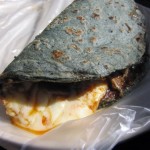
Ingredients
- 12 ounces of corn flour
- 4 ounces of velvet bean (ground into a flour in a blender)
- 1 Tbs Olive oil
- Salt to taste
- 4 tbs to 8 tbs water to make the dough
Directions
- Put the corn and velvet bean flour in a bowl.
- Add a teaspoon of salt.
- Add 4 tablespoonfuls of water (if after few minutes of blending the dough is still dry you might add another two tbs of water), Add one tablespoon of oil.
- Mix well to create dough. Knead well (typically takes about 10 minutes)
- When the kneading is done, make 12 portions and roll each in a nice round shape and thin.
- Place each raw tortilla on the hot pan and cook on every side for around 2 minutes (or more if your tortillas are thick). Cook it until it’s no longer doughy. Remove through the pan and serve hot. Any pickle or vegetable goes well using these Tortillas.
Caution
- Velvet beans shouldn’t be taken while pregnant. Theses seeds possess an uterine stimulating effect which can lead to birth defects.
- The seeds have uterine stimulant activity and may result in birth defects.
- The beans have androgenic activity that may increase testosterone levels. Individuals with excessive androgen syndromes ought to avoid velvet beans.
Comments
comments


